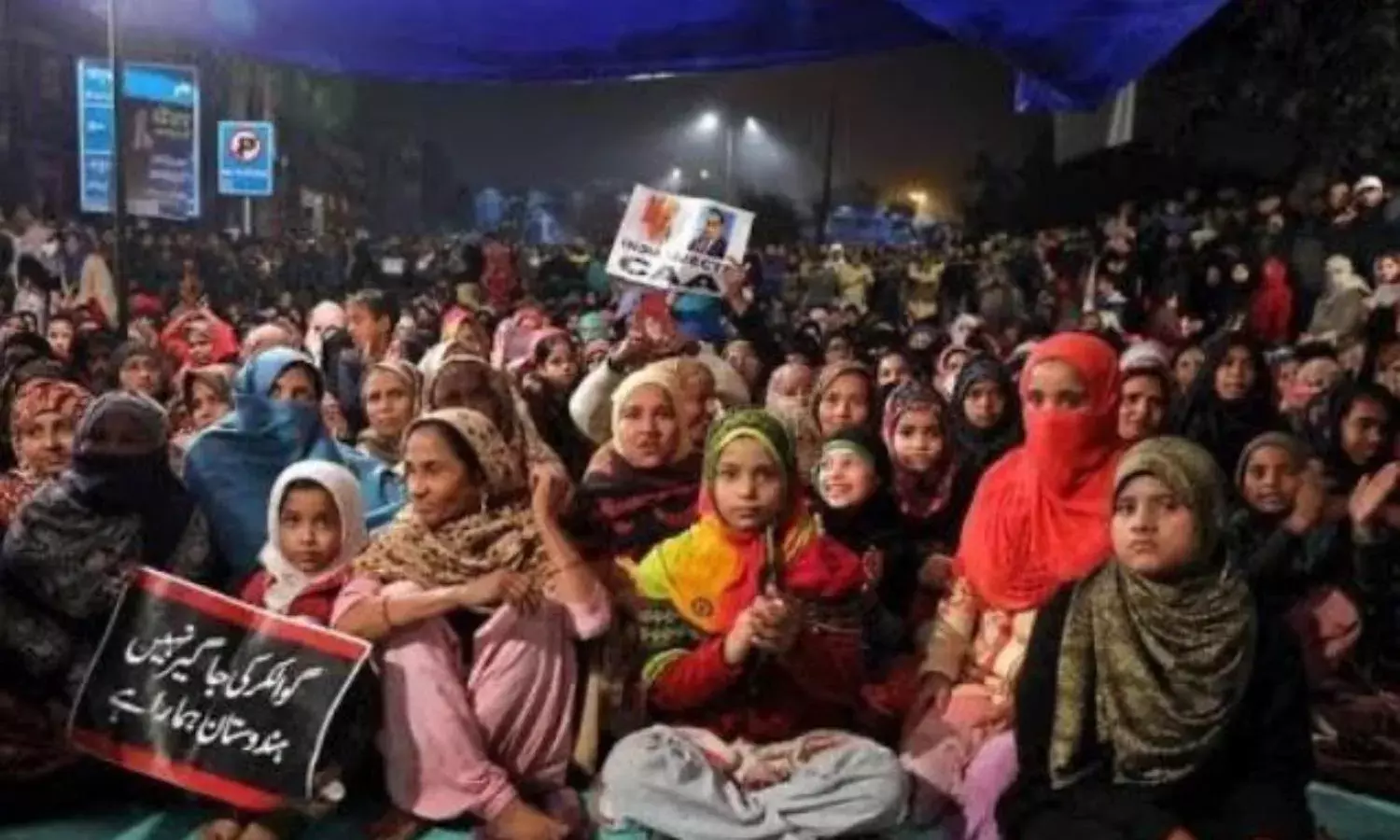'If Women Come Together Their Non Violence Will Crush the Atom Bomb': GANDHI
He often said that in independent India a higher form of non-violence would be required

On January 30, 1948 Mahatma Gandhi was targeted by three bullets of hatred. He laid down his life with “Hey Ram” and saved the nation from the ideology and forces representing hate.
His martyrdom checkmated those organizations who had the vicious design to convert India to a Hindu Rashtra. Today in twenty first century India the same forces which killed Gandhi are determining the national narrative and endangering the whole country in the name of food, dress, religion. And now the citizenship issue that is being employed through the mechanism of law to divide India and cause a crises of apocalyptic proportions never faced by our country in its recorded history.
?A few days before his martyrdom Gandhi prophetically said that if he was true to non-violence he would continue to speak about it even from his grave. Today Gandhi is indeed speaking from his grave and the whole country is invoking him and his thoughts to rally against forces bent upon dividing India on the citizenship issue.
?Gandhi candidly admitted that the kind of non-violence employed for making India free from British rule was not the non-violence of the brave but the non-violence of the weak and, therefore, India had to suffer tragic consequences of partition and the bloody violence in its aftermath. He said on many occasions that in independent India a higher form of non-violence would be required to address the issues that would confront India after its freedom from the colonial rule.
?It is instructive to note that Gandhi reposed extraordinary faith on women for establishment of a non-violent society. Slightly less than six months before his martyrdom he issued a message to Chinese women and affirmed his extraordinary faith in women, describing women's power as yet undiscovered power, and poetically wrote, "If an ancestral treasure lying buried in a corner of the house unknown to the members of the family were suddenly discovered, what a celebration it would occasion. Similarly women’s marvellous power is lying dormant. My experiment in non-violence would be instantly successful if I could secure women’s help".
?Today on the solemn occasion of the 73rd anniversary of Gandhiji's martyrdom women's marvellous power is displayed across India to fight against citizenship law enacted by Parliament in December 2019. Their non-violent method of protest by putting the picture of Gandhi in the forefront of their struggle and reading the Preamble of the Constitution and invoking the ideals of freedom movement brings out the vision of the father of our nation in a substantive sense.
?In the same message to Chinese women Gandhiji also wrote, "If only the women of the world would come together they could display such heroic non-violence as to kick away the atom bomb like a mere ball. Women have been so gifted by God".
?In twenty first century India women are indeed showing heroic non-violence. It is heartening to see the women in large numbers coming to the streets in many parts of the country to oppose discriminatory and unconstitutional law and showing extraordinary resilience and endurance in facing the highly coercive State machinery and hate filled and undignified remarks against them by people wielding power and occupying positions of Ministers and other elevated political posts.
?Non-violence as a method of dissent against the powers that be is amply demonstrated in protest movements by youth, students and ordinary people who are coming out in thousands. Of all such protestors a large segment constitutes women who are in the frontline to defend the Constitution.
?It is instructive to recall that for Gandhi there were five examples of Satyagrahis whom he considered as role models for Satyagrahis during freedom struggle. They were Bhakt Prahald, Socrates, Jesus Christ, Imam Hussain and Meera Bai. According to him Meera Bai was the only woman Satyagrahi in the history.
Gandhi said that Meera Bai suffered exclusion and prohibition from her own royal family for her unflinching adherence to her Guru Rai Das who was considered unfairly as an untouchable, and in none of her hymns to Lord Krishna did she never show any ill will against her tormentors. He, therefore, appealed to Indians to fight against British rule by following the example of Meera Bai and at the same time not to harbour any ill will or contempt against the British.
Gandhi in his numerous speeches used a line from Meera's hymn that she was tied to Lord Krishna through a silken thread of love and said that the thread she referred to was nothing but Khadi. He, therefore, invoked Meera, the only woman Satyagrahi, to promote the cause of freedom struggle at the heart of which remained equaility of all people of India and their fraternity and unity.
?The huge participation of women across the country in the struggle against the discriminatory citizenship law and NRC, and their stress on non-violence as a method of dissent, affirm the vision of Gandhi embodied in his statement that " If only the women of the world would come together they could display such heroic non-violence as to kick away the atom bomb like a mere ball."
?These women of India representing all faiths and speaking several languages are indeed a reservoir of non-violence, and it is a tribute to the father of our nation that they are showing to rest of the world by non-violent means that they can hold the powers that be to account. Gandhi was right in saying that his experiment in non-violence would be instantly successful if he could secure women’s help. On his martyrdom day we continue to hear him advocating the cause of non-violence and women are taking forward the cause through their non-violent movements across the country. Humble tribute to Mahatma Gandhi.
?



